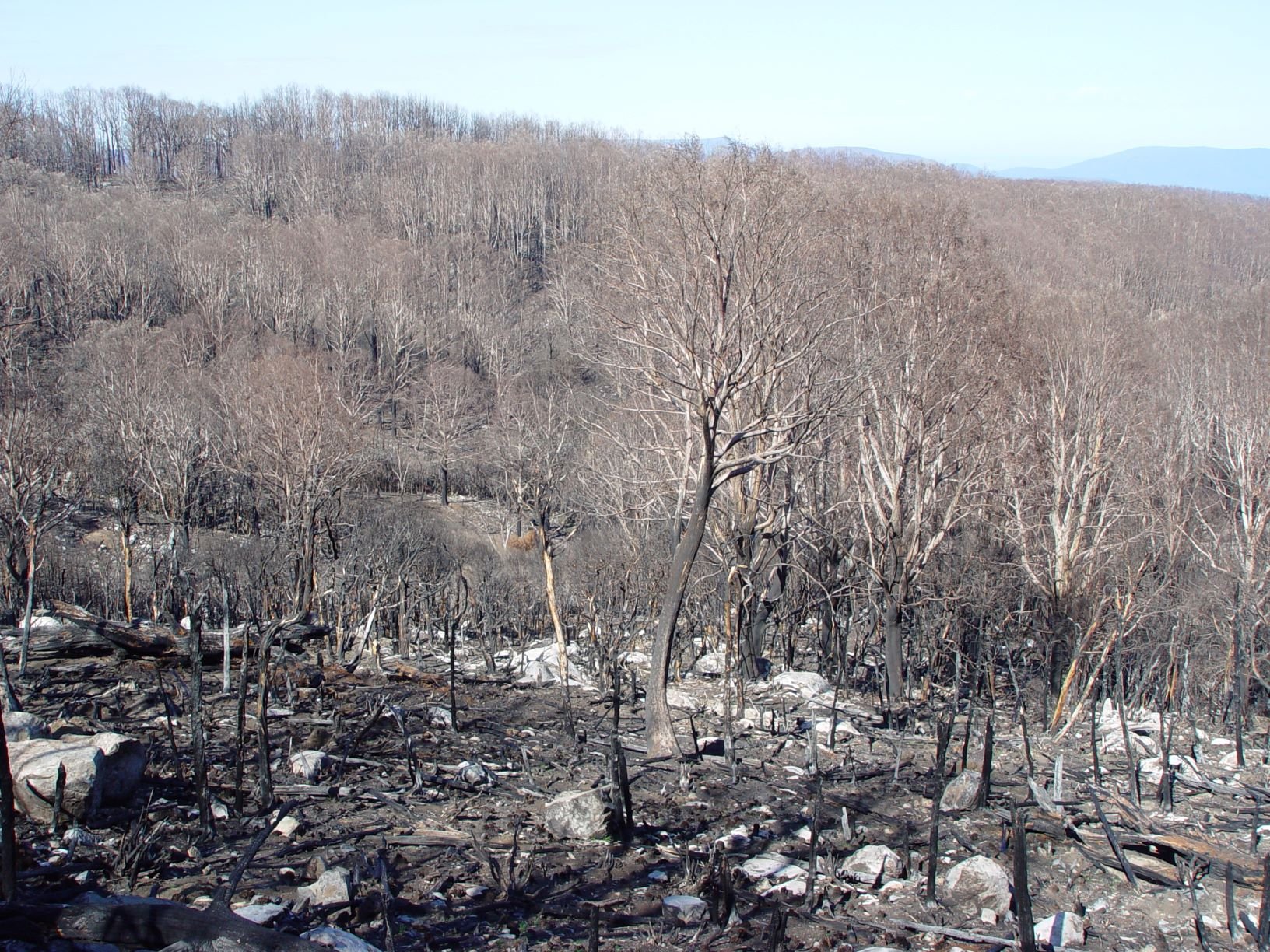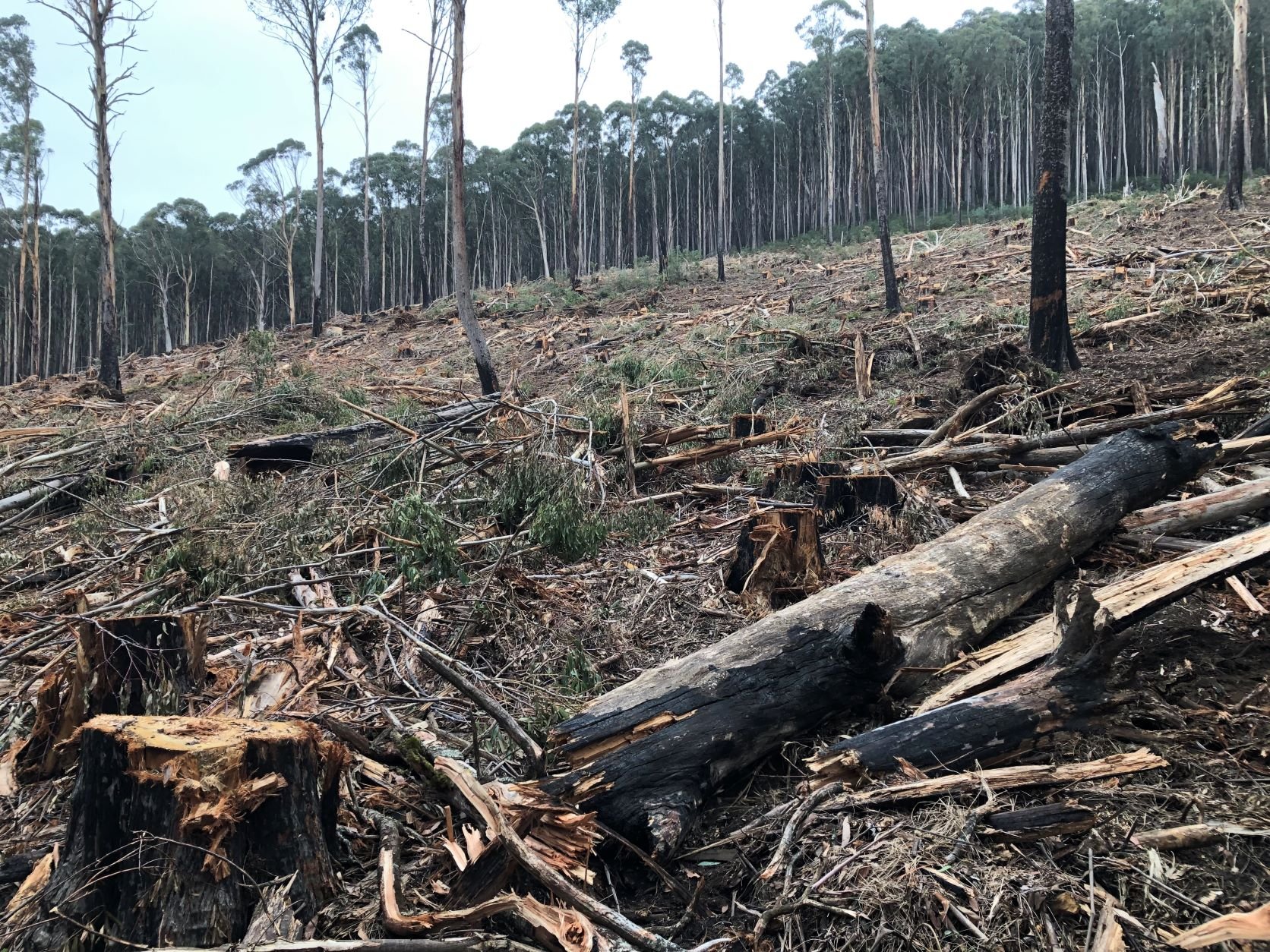Critically endangered possum uses two different types of canopy bridges to cross forestry roads
Written by Rodney van der Ree, Briony Mitchell, Kylie Soanes, Lee Harrison & Joanne Ainley
October 16th, 2023
The Leadbeater’s possum in south-eastern Australia is critically endangered. Photo: Dan Harley
The Leadbeater’s possum weighs about 150 gm and feeds on insects, plant sap and honeydew (a sugar-rich insect secretion). It nests in tree hollows in very large and very old trees – generally more than 150 years of age, and most often in trees that have died.
Leadbeater’s possums were thought to be extinct until they were rediscovered in 1961. They now occupy a very small area (less than 100 km x 100 km) of tall wet forests in the Central Highlands of Victoria, as well as a much smaller lowland population nearby, just a couple of hours drive from Melbourne in south-east Australia. The tall eucalypt forests are dominated by Mountain Ash, the tallest flowering plant in the world, towering more than 80 m above the forest floor.
Threats
The forest has been indelibly shaped by two major disturbances – successive wildfires that cover vast areas, and extensive logging of the native forest for timber and woodchips (Figure 1). The survival of Leadbeater’s possums is intricately linked to both of these events. Wildfire is important to regenerate the forest, but fires that are too hot and too frequent can kill trees and destroy the dead trees that the possums prefer to den in. Similarly, clearfell logging on short rotations does not allow trees to get old enough to develop hollows, reducing habitat quality and restricting movement of possums. Both of these landscape-scale factors are direct and significant threats to the survival of Leadbeater’s possums.
Figure 1. (Left) High-intensity wildfires are a major threat to the survival of Leadbeater’s possum – such as the 2009 Black Saturday fires that burnt 34% of their habitat. When combined with logging (right), the amount and quality of habitat is further reduced. Photos: Dan Harley.
Why do we need canopy bridges?
The Central Highlands are crisscrossed by a vast network of linear clearings, primarily roads used for local access, forestry and tourism. In response to intense megafires in 2009 and 2019/2020, an extensive network of fire breaks have been installed to control wildfires. Firebreaks vary in size and extent of clearing, but can include the removal of canopy trees and ground vegetation, and the creation of a vehicle access track. These breaks in canopy cover disrupt the movement of Leadbeater’s possums, causing them to come to the ground where they are at risk of predation by foxes and wild dogs as well as wildlife-vehicle collision.
The trial
We radiotracked the movements of four Leadbeater’s possums at two sites along narrow gravel roads for 3 – 4 months and found that they never crossed the road. We then installed two pairs of canopy bridges (each pair including a single rope and a ladder bridge– see Figure 2) at each site (i.e. a total of 8 bridges). The bridges were approximately 15 m long and made of 35 mm diameter UV-stabilised rope.
Approximately two years after installing the bridges we fitted cameras on each end of the bridges to register use by wildlife. The cameras recorded a 20 second video at each trigger event and were operational for 12 months.
Figure 2. Photos of the study site and bridge designs: a) the narrow road with ladder bridge (foreground) and single-rope bridge (background) visible, and view of a single-rope bridge (b) and ladder rope bridge (c) from below.
We detected Leadbeater’s possums on the bridges almost 2,700 times during the 12 months of camera monitoring, with a clear preference for the ladder-style rather than the single ropes. Five other species of arboreal marsupial were also detected using bridges at much lower rates than Leadbeater’s possums (Figure 3), and they also used the ladders at higher rates than the single ropes. The ladders appeared to be the preferred design (Figure 4), probably because they are more stable and provide better opportunities to avoid predators than the single ropes.
Figure 3. Arboreal mammals crossing the rope bridges including a feather tail glider (left), Leadbeater’s possum (centre) and mountain brushtail possum (right).
Figure 4. Mean number of crossings and standard error for arboreal mammals at each bridge design by eastern ringtail possums (RT), agile antechinus (AA) mountain brushtail possum (BT) and Leadbeater’s possum (LBP). The Sugar Glider and Feathertail Glider were also detected using the bridges at very low rates and are not shown in this graph.
What else did we see?
Owls were recorded perching on all bridges, and a southern boobook was observed feeding on an agile antechinus while perched on the single-rope bridge. A Leadbeater’s possum escaped attack from an unidentified owl by darting through the ladder structure and hiding below the bridge as the bird swooped.
We didn’t see any aggression between species, not even when they crossed the bridge in opposite directions at the same time, which happened six times. However, we did observe two Leadbeater’s possums fighting on a ladder bridge, which ended when one possum tossed the other from the bridge.
What’s next?
This study was a preliminary investigation to determine if Leadbeater’s Possum would use canopy bridges, and if there was a preference for the style of bridge. Ladders appear to be preferred over single ropes, as has been concluded for many other possum and glider species across Australia.
The next stage of this work is to install bridges at more locations and across wider and busier roads and quantify rates of use and measure effectiveness. Canopy bridges may also help Leadbeater’s possums access new habitat, increase population size and improve its future conservationprospects. Effectiveness should be assessed by measuring various parameters before and after mitigation, and at sites with and without canopy bridges, including:
The movement of animals using radiotracking and camera traps
Gene flow
Assessing population size and decreases in the risk of extinction
Leadbeater’s possums face a perilous future – while native forest logging is to be phased out by the end of 2023, wildfires are expected to continue with increased frequency, intensity and extent under climate change. Canopy bridges are a relatively cheap and simple measure to address some of the threats caused by habitat fragmentation to Leadbeater’s possums and other arboreal marsupials and should be implemented more widely.
Author information
Rodney van der Ree, Adjunct Assoc Professor in the School of BioSciences, University of Melbourne and National Technical Executive at WSP Australia Pty Ltd, Melbourne, Victoria, 3000, Australia. rvdr@unimelb.edu.au
Briony Mitchell, Ecologist at WSP Australia Pty Ltd, Melbourne, Vic. 3000, Australia.
Kylie Soanes, Research Fellow in the School of Ecosystem and Forest Sciences at the University of Melbourne, Parkville, Vic. 3010, Australia.
Lee Harrison, Senior Ecologist at the City of Melbourne, Melbourne, Vic. 3000, Australia.
Joanne Ainley (in memoriam), was an ecologist at the Australian Research Centre for Urban Ecology at the Royal Botanic Gardens Victoria, South Yarra, Vic. 3141, Australia.
Source citation
Mitchell, B., Harrison, L., Ainley, J., van der Ree, R. and Soanes, K. (2022), Mitigating the effect of linear infrastructure on arboreal mammals in dense forest: A canopy bridge trial. Ecological Management and Restoration, 23: 228-236. https://doi.org/10.1111/emr.12568
Other videos of use of the bridges by different species are available in the supporting information.
Editor:
Carme Rosell
Cite this summary:
van der Ree, R., Mitchell, B., Soanes, K., Harrison, L. & Ainley, J. (2023). Critically endangered possum uses two different types of canopy bridges to cross forestry roads. Edited by Rosell, C. TransportEcology.info, Accessed at: https://transportecology.info/research/overcome-barriers-to-fauna-sensitive-design







